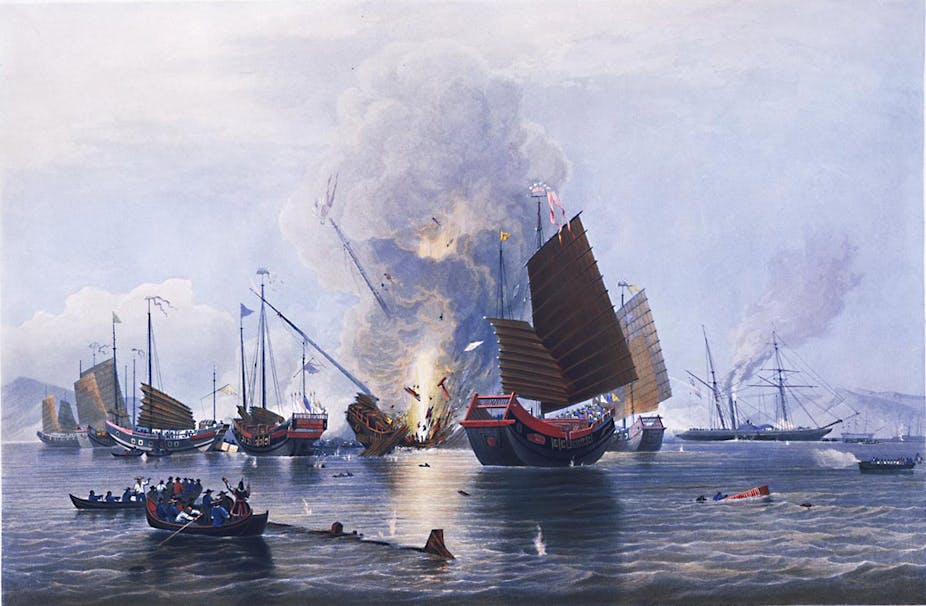As Britain prepares to leave the EU, its new international trade secretary is talking up the potential of trade with the 52 nations that make up the old British empire. Some have even dubbed Liam Fox’s meeting with Commonwealth leaders to discuss trade “Empire 2.0”.
There is an irony here. It comes at a time when populist critiques of the economic consequences of globalisation are frequently combined with nostalgia for Britain’s imperial past. But these views neglect the fact that the British Empire was itself a key agent for economic globalisation and the mass movement of migrant workers in the 19th century.
There appears to be a consensus that Brexit and the election of Donald Trump in the US are the result of low and middle income workers rejecting globalisation – specifically the integration of economies, industries and markets, and the connected movement of goods and workers across national borders.

Brexit is framed as a “backlash” against globalisation, led by those who have been “left behind” as they struggle to find jobs due to competition from migrant workers, while traditional manufacturing jobs move overseas.
At the same time, the historical links afforded by the British Empire have been presented as an alternative to economic over-reliance on Europe. Since the referendum, these Commonwealth nations have been described as “desperate” to agree to free trade deals. And Fox’s meeting with 30 Commonwealth ministers in London appears to confirm that there is more than just imperial nostalgia at play.
Overlooking some facts
There are two big issues with the imperialist view of Britain’s global future. It is based on an over positive view of the British Empire. As argued by the academic Alan Lester, public discussion of Britain’s imperial past tends to focus on positive rather than negative aspects. Plus, it tends to overlook the historical role of the British Empire in facilitating economic globalisation and mass migration.
The First Opium War (1839-1842) is among the most infamous examples of the British Empire’s role in economic globalisation. The opium trade involved private companies smuggling the highly addictive, and prohibited, drug from British India to China. When the Chinese destroyed British-owned opium in an attempt to stop the trade, the British government dispatched gunboats to both restore national honour and guarantee access to this lucrative export market.

At the end of the conflict, in which Britain’s naval technology ensured a decisive victory, the Treaty of Nanjing opened up China’s economy to the world. The treaty required large compensation payments from China, ceded the island of Hong Kong to the British, opened five Chinese treaty ports to foreign trade and ensured that British subjects in China were protected by British laws.
This opening of China to British traders was a key moment in economic globalisation. The Treaty of Nanjing was the first of a number of “unequal treaties” that saw China grant similar concessions to foreign powers. In Chinese history it is seen as the start of China’s “century of humiliation” at the hands of foreign imperialism.
Free trade, free movement
British advocates of opening China to foreign trade, such as the opium smuggler James Matheson, criticised the Chinese market as an archaic monopoly. The Opium War was justified as part of the necessary destruction of economic protectionism, which was heavily criticised by British proponents of free trade.
But the free movement of British goods into China was matched by the movement of people out of China. The opening of the Treaty Ports to foreign powers, economic crisis in Southern China (a consequence of the opium trade) and the discovery of gold in various colonial locations provided the context for some of the largest mass migrations of the 19th century.
A popular destination for Chinese migrants were the British colonies in Australia. Around 55,000 migrants left southern China for Australia between 1851 and 1875. But Chinese immigration met with opposition from Australia’s white working class. Beginning in Victoria in 1855, the second half of the 19th century saw a series of colonial measures designed to prevent Chinese immigration. This culminated in the White Australia policy in 1901.
The contradiction between the British Empire’s role as an agent of economic globalisation and the opposition of white colonists to Chinese immigration was pointed out by Chinese migrants in 1879. In response to the exclusionary political rhetoric sweeping Australia, Lowe Kong Meng, Cheok Hong Chong and Louis Ah Mouy argued:
This outflow of our population was never sought by us. Western powers, armed with the formidable artillery with which modern science has supplied them, battered down the portals of the empire; and, having done so, insisted upon keeping them open.
Empire, economic globalisation and mass migration were connected.
The British Empire did not just open economic markets to trade, it facilitated the movement of migrant workers in the 19th century and beyond. To suggest that the empire offers a potential model for Britain’s role in the world today is to misunderstand this history.

